- Western Park was a forest called ‘Herewoode’ and belonged to one of William the Conqueror’s most trusted Barons; Hugh de Grandmaisnil
- For many decades Western Park was well known for its 1930s Open Air School, now Grade II Listed
- During the First World War, the Wartime Ambulance Station trained on Western Park and it was also the training ground for the Leicester Regiment’s Volunteers
Early occupation and construction
There is evidence at Western Park of possibly Leicester’s earliest occupation. What is believed to be an early Bronze Age henge site and burial mounds have been discovered there along with evidence of Roman occupation as well.
It is thought the Roman road linking Leicester (Ratae Coritanorum) and Manchester (Manduessedum) runs through the park although the exact location remains unknown. Areas of the park have also seen multiple phases of sandstone quarrying which also possibly date as far back as the Roman period. This ‘Dane Hills Sandstone’ (now known as Arden Sandstone) is thought to be the material from which many of Leicester’s earliest churches were built, as well as The Magazine.
Old Major
By the time of the 1089 Domesday Book record, Western Park was a forest called ‘Herewoode’ and belonged to one of William the Conqueror’s most trusted Barons; Hugh de Grandmaisnil. The park was part of the wider Leicester Forest and by the 12th Century had passed into the hands of the Earls of Leicester. ‘Assarting’ or the removal of trees for fuel and grazing saw the forest dwindle in size until the Frith (the approximate area of today’s park) was fenced off –the tree known as ‘Old Major’ is thought to be a surviving remnant of this forest and possibly the oldest tree in any of Leicester’s parks.
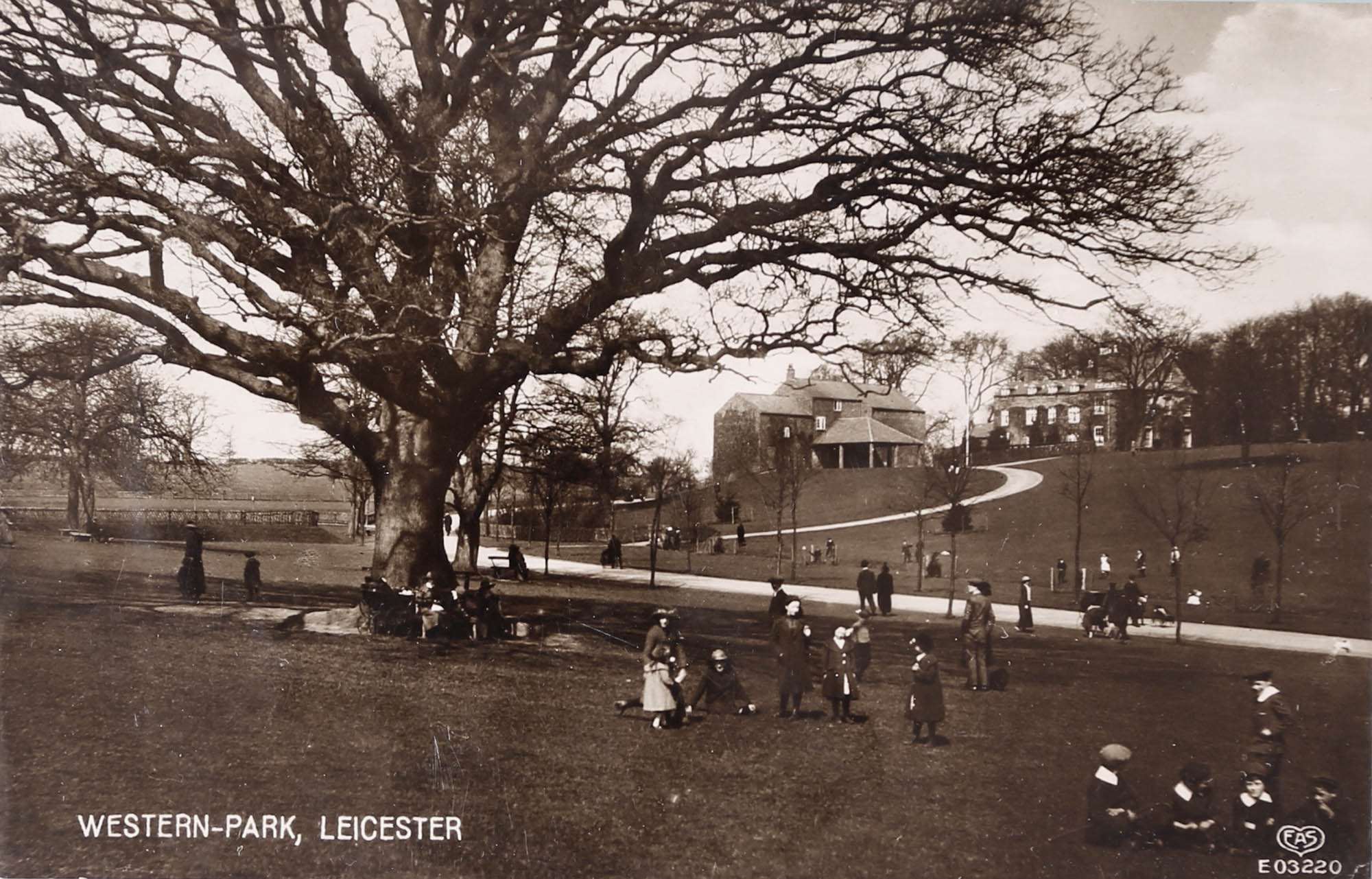
A park and school
In 1897 the Leicester Corporation bought the park for £30,000 primarily for the enjoyment by residents of Leicester’s expanding West End. The park was officially opened by the Mayor of Leicester in 1899 and an Oak tree and Californian Fir were planted to commemorate the occasion. Initial complaints by the Parks Committee stated that the park was not frequently used by the public due to its location outside the town and as a result a tram line was constructed in 1904 to bring in visitors to the city.
For many decades Western Park was well know for its 1930s Open Air School, now Grade II Listed. This was constructed for children who were recovering from debilitating illnesses, particularly of a respiratory nature and was characterised by programs of hydrotherapy, exercise and nutrition aimed at improving the health of the most impoverished of Leicester’s children. In the Committee Minutes it was explained that the aim of the school was to ‘so train the children that they would eventually become hardy men and women’. The school was open from 1930 to 2005.
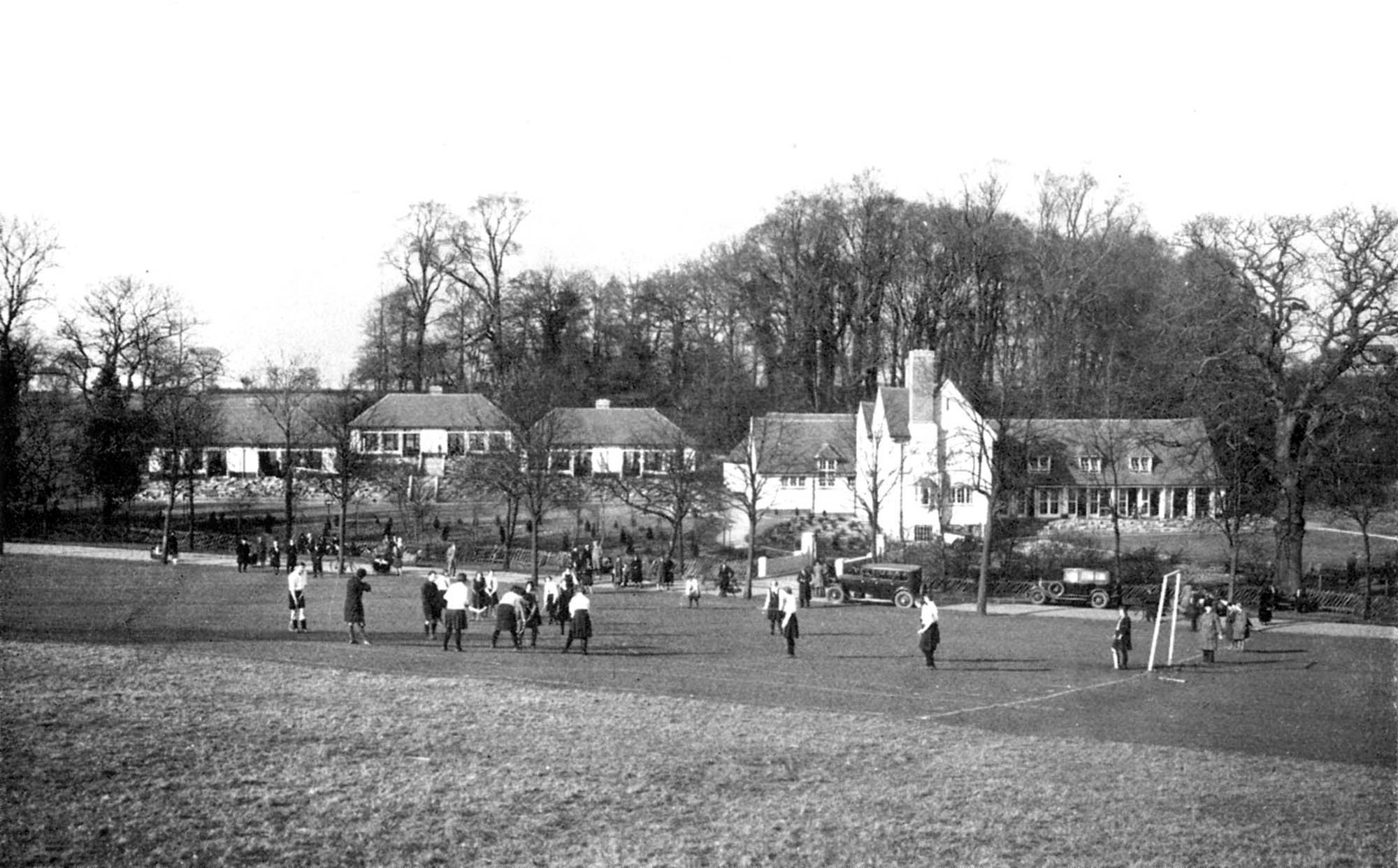
The World Wars
During the First World War, the Wartime Ambulance Station trained on Western Park and it was also the training ground for the Leicester Regiment’s Volunteers. Even the grass of the golf course was used for the war effort when it was harvested to feed horses and cattle when Great Britain’s agriculture was stretched under rationing.
During the Second World War, air raid drills were carried out at the park with military inspections and processions taking place in the grounds. There was a public air raid shelter in the corner of the park next to Hinckley Road and children recalled seeing guns and search lights illuminating the sky above it, with concrete sewer pipes being laid across the grassy areas to prevent enemy aircraft from attempting to land.
A beautiful local park
Leicester City Corporation took pride in providing their citizens with a public park with a majestic entrance and lined avenue of trees. The ‘fair pool’ became the much-loved paddling pool, and that, along with tennis courts, the band stand and a play area secured the immediate success of the park with all social classes.
The park today is still a popular visitor spot for families and boasts frequent concerts in the bandstand as well as a wide variety of sporting and recreational facilities.
Gallery
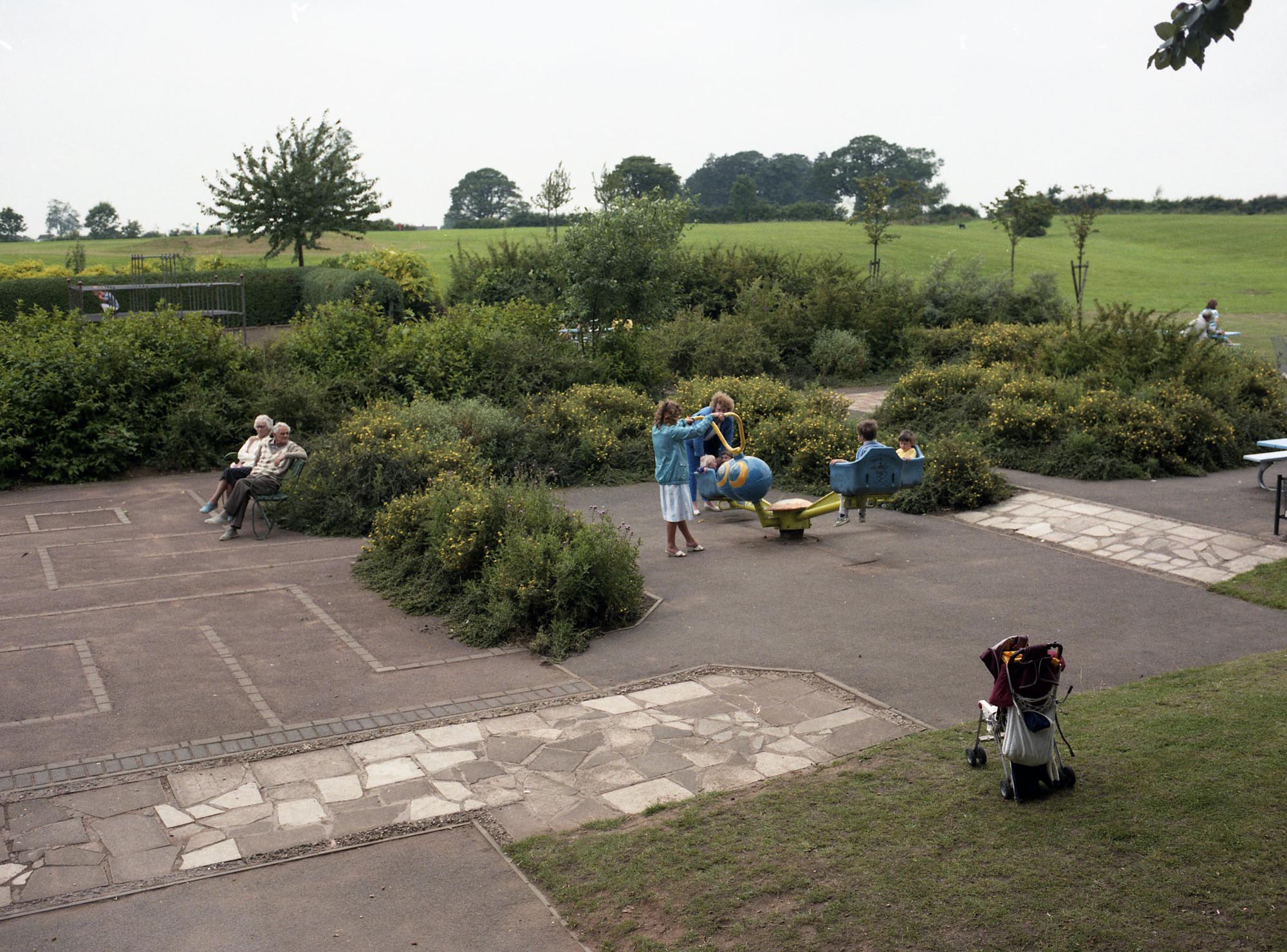
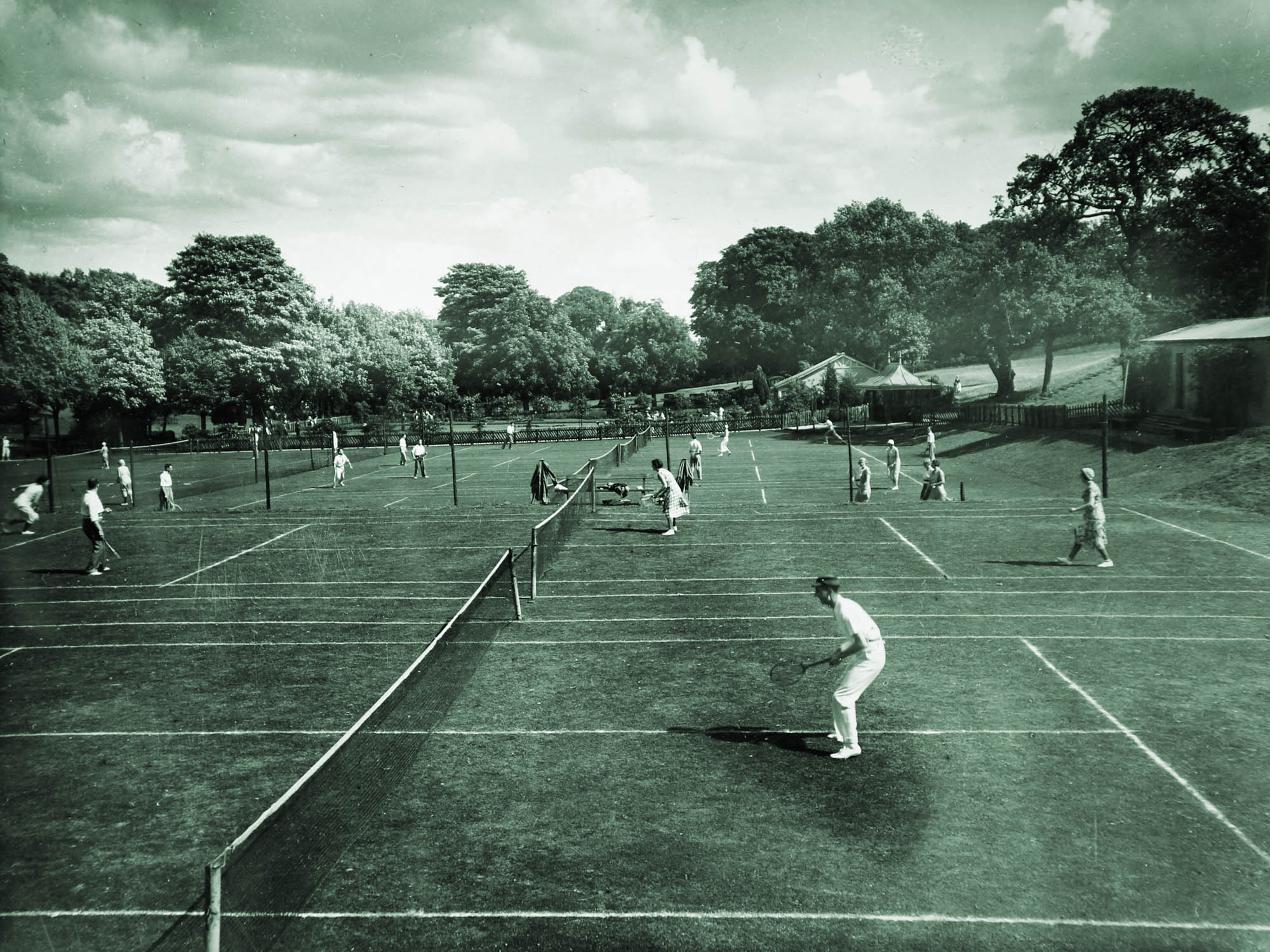

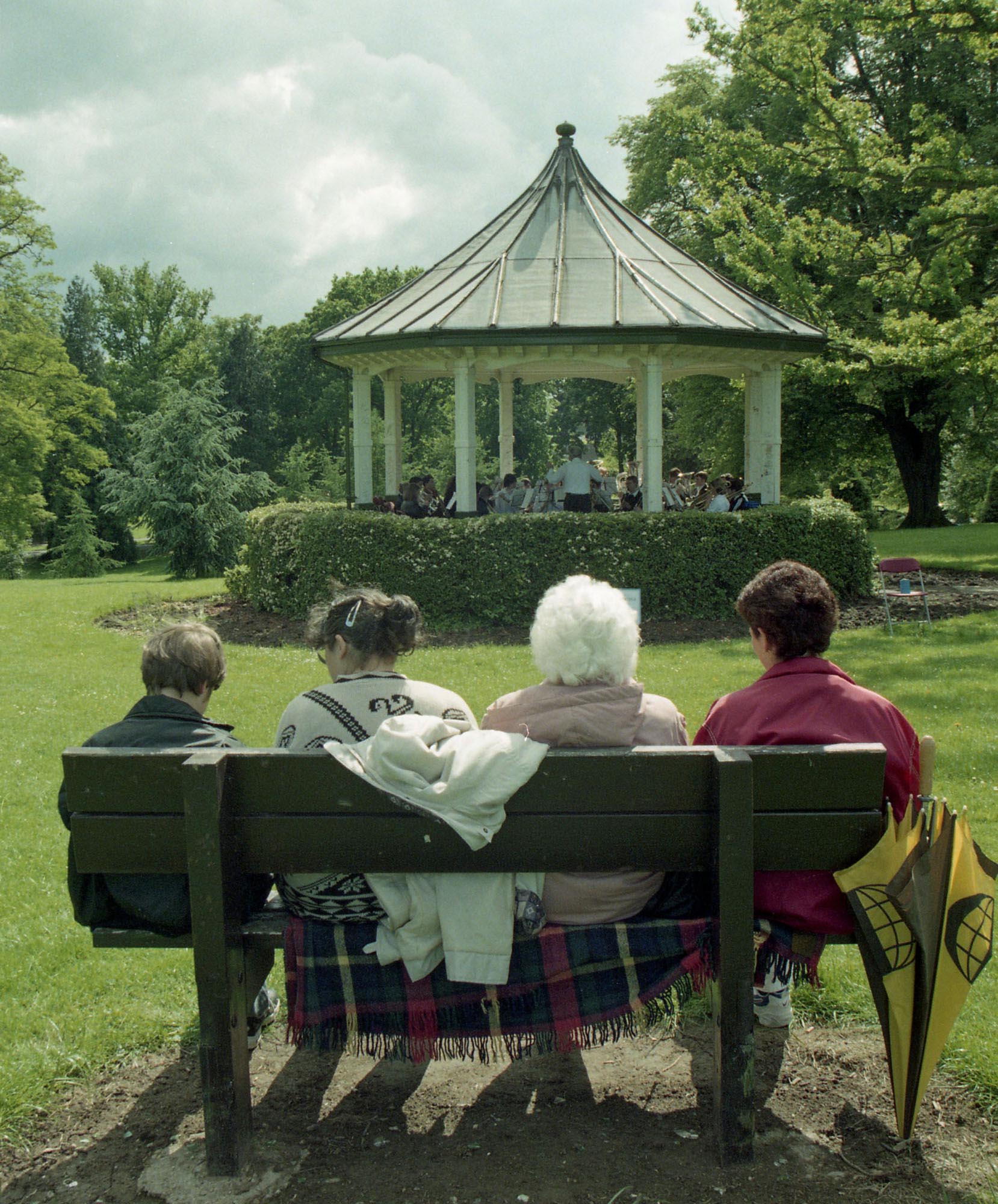
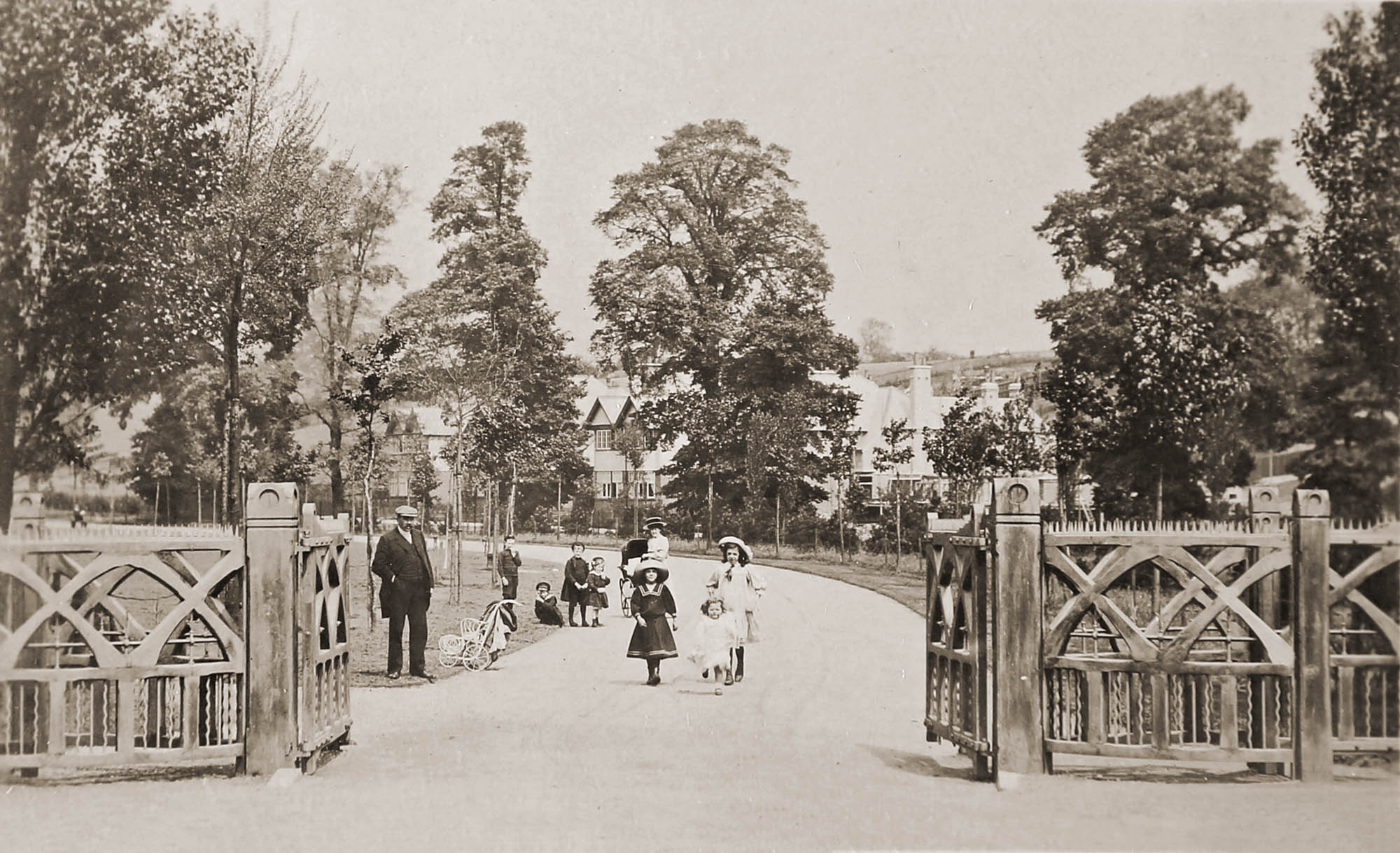

Roman Leicester
(47- 500) A military fort was erected, attracting traders and a growing civilian community to Leicester (known as Ratae Corieltauvorum to the Romans). The town steadily grew throughout the reign of the Romans.
Medieval Leicester
(500 – 1500) The early years of this period was one of unrest with Saxon, Danes and Norman invaders having their influences over the town. Later, of course, came Richard III and the final battle of the Wars of the Roses was fought on Leicester’s doorstep.
-
The Castle Motte1068

-
Leicester Cathedral1086

-
St Mary de Castro1107

-
Leicester Abbey1138

-
Leicester Castle1150

-
Grey Friars1231

-
The Streets of Medieval Leicester1265

-
Leicester Market1298

-
Trinity Hospital and Chapel1330

-
Bow Bridgecirca 1350

-
Church of the Annunciation1353

-
John O’Gaunt’s Cellar1361

-
St John's Stone1381

-
Leicester Guildhall1390

-
The Magazine1400

-
The Blue Boar Inn1400

-
The High Cross1577

Tudor & Stuart Leicester
(1500 – 1700) The wool trade flourished in Leicester with one local, a former mayor named William Wigston, making his fortune. During the English Civil War a bloody battle was fought as the forces of King Charles I laid siege to the town.
Georgian Leicester
(1700 – 1837) The knitting industry had really stared to take hold and Leicester was fast becoming the main centre of hosiery manufacture in Britain. This new prosperity was reflected throughout the town with broader, paved streets lined with elegant brick buildings and genteel residences.
-
Great Meeting Unitarian Chapel1708

-
The Globe1720

-
17 Friar Lane1759

-
Black Annis and Dane Hills1764

-
Leicester Royal Infirmary1771

-
New Walk1785

-
Freemasons’ Hall1790

-
Gaols in the City1791

-
Friars Mill1794

-
City Rooms1800

-
Development of Highfields1800

-
Wesleyan Chapel1815

-
20 Glebe Street1820

-
Charles Street Baptist Chapel1830

-
Glenfield Tunnel1832

-
James Cook1832

Victorian Leicester
(1837 – 1901) The industrial revolution had a huge effect on Leicester resulting in the population growing from 40,000 to 212,000 during this period. Many of Leicester's most iconic buildings were erected during this time as wealthy Victorians made their mark on the town.
-
Leicester Union Workhouse1839

-
Campbell Street and London Road Railway Stations1840

-
The Vulcan Works1842

-
Belvoir Street Chapel1845

-
Welford Road Cemetery1849

-
Leicester Museum & Art Gallery1849

-
King Street1850

-
Cook’s Temperance Hall & Hotel1853

-
Amos Sherriff1856

-
Weighbridge Toll Collector’s House1860

-
4 Belmont Villas1862

-
Top Hat Terrace1864

-
Corah and Sons - St Margaret's Works1865

-
Kirby & West Dairy1865

-
The Clock Tower1868

-
Wimbledon Works1870

-
The Leicestershire Banking Company1871

-
St Mark’s Church and School1872

-
Victorian Turkish Baths1872

-
The Town Hall1876

-
Central Fire Stations1876

-
Aylestone Road Gas Works and Gas Museum1879

-
Gas Workers Cottages1879

-
Leicestershire County Cricket Club1879

-
Welford Road Tigers Rugby Club1880

-
Secular Hall1881

-
Development of Highfields1800

-
Abbey Park1881

-
Abbey Park Buildings1881

-
Victoria Park and Lutyens War Memorial1883

-
Leicester Fosse FC 18841884

-
Leicester Coffee and Cocoa Company Coffee Houses1885

-
St Barnabas Church and Vicarage1886

-
Abbey Pumping Station1891

-
Luke Turner & Co. Ltd.1893

-
West Bridge Station1893

-
Thomas Cook Building1894

-
The White House1896

-
Alexandra House1897

-
Leicester Boys Club1897

-
Grand Hotel and General Newsroom1898

-
Highfield Street Synagogue1898

-
Western Park1899

-
Asfordby Street Police Station1899

-
Leicester Central Railway Station1899

Edwardian Leicester
(1901 – 1910) Electric trams came to the streets of Leicester and increased literacy among the citizens led to many becoming politicised. The famous 1905 ‘March of the Unemployed to London’ left from Leicester market when 30,000 people came to witness the historic event.
-
YMCA Building1900

-
The Palace Theatre1901

-
Pares's Bank1901

-
Coronation Buildings1902

-
Halfords1902

-
High Street1904

-
George Biddles and Leicester's Boxing Heritage1904

-
Municipal Library1905

-
Leicester Boys Club1897

-
The Marquis Wellington1907

-
Guild Hall Colton Street1909

-
Women's Social and Political Union Shop1910

-
Turkey Café1901

Early 20th Century Leicester
(1910 – 1973) The diverse industrial base meant Leicester was able to cope with the economic challenges of the 1920s and 1930s. New light engineering businesses, such as typewriter and scientific instrument making, complemented the more traditional industries of hosiery and footwear manufacturing.
-
Dryad Handicrafts1912

-
De Montfort Hall1913

-
Leicester During the First World War1914

-
Fox’s Glacier Mints1918

-
Statue of Liberty1919

-
Housing in Saffron Lane1924

-
Winstanley House1925

-
Housing in North Braunstone1926

-
Lancaster Road Fire Station1927

-
The Little Theatre1930

-
Saffron Hill Cemetery1931

-
Braunstone Hall Junior School1932

-
Former City Police Headquarters1933

-
Savoy Cinema1937

-
Eliane Sophie Plewman1937
-
City Hall1938

-
Athena - The Odeon Cinema1938

-
The Blitz in Highfields1940

-
Freeman, Hardy and Willis - Leicester Blitz1940

-
Leicester Airport1942

-
Leicester’s Windrush Generations1948

-
Netherhall Estate1950
-
Housing at Eyres Monsell1951

-
Silver Street and The Lanes1960

-
Bostik1960

-
Auto-Magic Car Park (Lee Circle)1961

-
University of Leicester Engineering Building1963

-
Sue Townsend Theatre1963

-
Central Mosque1968

-
Belgrave Flyover1973

Modern Leicester
(1973 – present day) Industry was still thriving in the city during the 1970s, with the work opportunities attracting many immigrants from all over the world. While industry has declined in recent years, excellent transport links have made Leicester an attractive centre for many businesses. The City now has much to be proud of including its sporting achievements and the richness of its cultural heritage and diversity.
-
Haymarket Theatre1973

-
The Golden Mile1974

-
Acting Up Against AIDS1976

-
Belgrave Neighbourhood Centre1977

-
Diwali in Leicester1983

-
Leicester Caribbean Carnival1985

-
Samworth Brothers1986

-
Jain Centre1988

-
Guru Nanak Dev Ji Gurdwara1989

-
King Power Stadium2002

-
LCB Depot2004

-
Curve2008

-
BAPS Shri Swaminarayan Mandir2011

-
Makers Yard2012

- Roman Leicester
- Medieval Leicester
- Tudor & Stuart Leicester
- Georgian Leicester
- Victorian Leicester
- Edwardian Leicester
- Early 20th Century Leicester
- Modern Leicester















































































































































